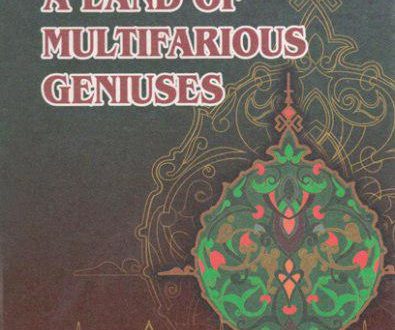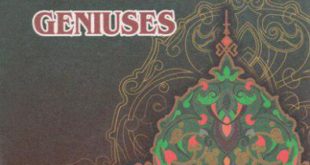Abdurazzaq Samarqandi was known to have taken an active part in such di plomatic visits during the reigns of Abulqasim Babur and Sultan Abu Said. In 1463, in accord with his request, he was released from the position of diplomacy and appointed to the position of sheikh at the khanakah of Shahrukhiya in Herat. In July/August of 1482 (887 A.H., in the month of Jumad al-awal), he died in this city.
Though Abdurazzaq Samarqandi is known to have written some research works dealing with poetry and Arabic grammar, the only historical work that has reached us is his book written in Persian “Matla’i sa’dayn va majmai bahrayn” (Rising of two happy stars and the juncture of two seas) which consists of two volumes. The author began writing this book in 1467 and finished it in the month of Safar of 1470.
The first volume of this book contains a short story about the ruler of Iran Abu Sa’id (1316-1335) whose ancestors were related to Genghis Khan. Then the story tells some interesting facts about the history of Amir Temur the Great and goes on dealing with the history of Central Asia, Iran, Afghanistan, Azerbaijan and partly the history of India covering the period from 1304 to 1405. The historical events taking place in this book ends with the death of Temur the Great on 18 February 1405 (on the 17th day of the month Sha’ban 807 A.H.) in Utrar and the occupation of the throne of Samarkand by his grandson Khalil Sultan.
The second volume of the book begins with the preface in which the author intends to tell the history of the successors of Temur the Great but the story begins with the start of the reign of Shahrukh Mirza (March, 1405) in Herat. Having finished his story up to the time of death of Shahrukh Mirza (1447), he tells about the events taking place during the reign of the following Temurid princes as Mirza Abulqasim Babur, Sultan Abu Sa’id Mirza, etc. and finishes his story with the events dealing with the execution of the prince Yadgar Mirza by the king Husain Bayqara and his second reach to the throne of Herat.
The events described in “Matla’i sa’dayn” are compiled in the chronological order. The events taken place before the author (in the middle of the 15th century) are described relying on the works written before him. Finishing his story with the events happened in 1427,Abdurazzaq Samarqandi wrote about them the following lines: “The work written by Hafizi Abru “Zubdatu-t-tavarikhi Baysun-ghuri” ends here”. This fact means that the main source that Abdurazzaq Samarqandi used was “Zubdatu-t-tavarikhi Baysunghuri” by a well-known historian Hafizi Abru.
The further historical events after this period described in “Matla’i sa’dayn” were told by the author on the facts he had seen and witnessed during his life and activities. Whatever it may be, despite the origin of these facts, historical materials included in “Matla’i sa’dayn” remain as an important source for the researchers.
As is seen from the facts provided in “Matla’i sa’dayn”, it describes mostly the political events. However, in addition to him, the creational role of the Temurid princes in the economic,cultural and spiritual life of the country were also at the centre of attention of Abdurazzaq Samarqandi. Therefore, the events dealing with the activities of the rulers as Mirza Ulugbek, Baysunghur Mirza and others in the fields of science, :ducation and culture were described perfectly well.
It is noteworthy that “Matla’i sa’dayn” by Abdurazzaq Samarqandi earned great fame and was highly appreciated by the historians of the time. This book was also acknowledged and accepted in Europe as a precious historical source providing important materials that deal with the social, political, economic and cultural life in Maveraunnahr in the 15th century. During the 19th century some parts of this book were translated and published in foreign languages such as French (Langle, Katrme, Bloshe), English (Elliot) and Russian.
The Persian version of “Matla’i sa’dayn” was published in Lahore (Pakistan) in 1936 by a textologist Muhammad Shafe. The memoirs of Abdurazzaq Samarqandi on his visit to India in 1442-1444 was translated into Uzbek and published in 1960 in Tashkent with its critical Persian text. The part describing the events of 1405-1427 (Volume I, Part I) was also published in Uzbek in Tashkent in 1969. Ghiasiddin Naqqash’s diary about his visit to China included into “Matla’i sa’dayn” was translated into Uzbek and published in Tashkent in 1992. Parts I and II of Volume II of the book were also translated into Uzbek and published in Tashkent.
 Imom Buxoriy xalqaro ilmiy-tadqiqot markazi bukhari.uz
Imom Buxoriy xalqaro ilmiy-tadqiqot markazi bukhari.uz











